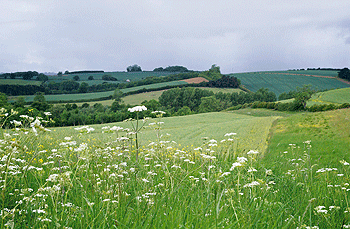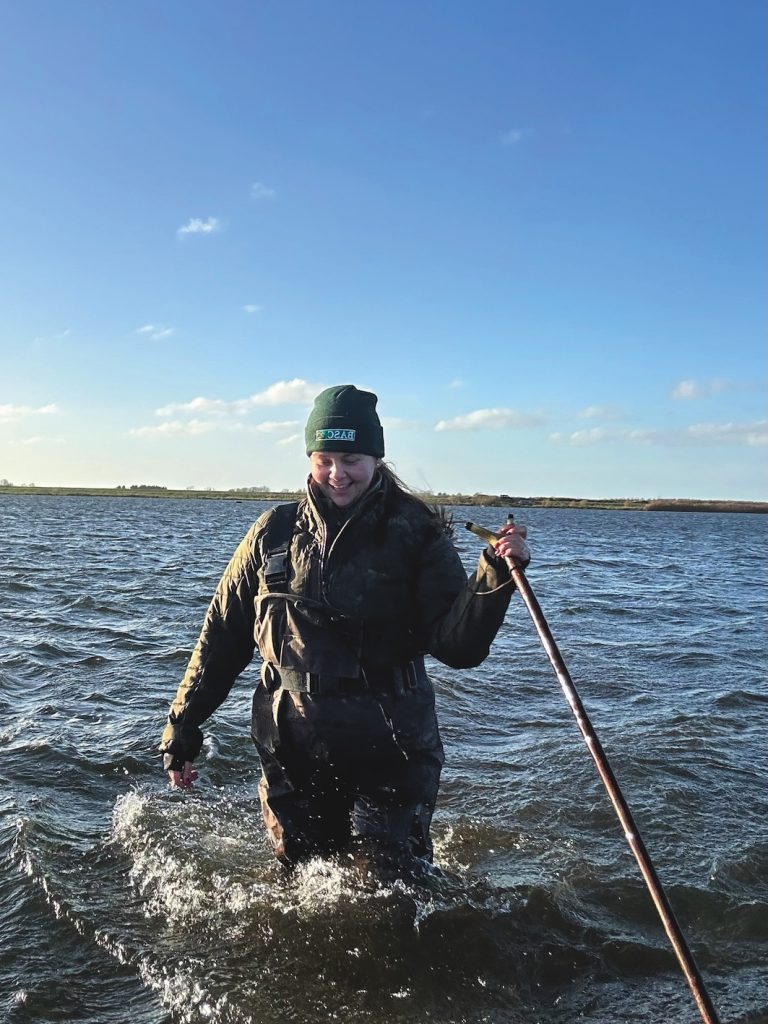Win CENS ProFlex DX5 earplugs worth £1,149 – enter here
Where the birds sing
<strong>The GWCT has reversed 30 years of wildlife decline on a conventional Leicestershire farm that remains profitable. Joe Dimbleby finds out how</strong>

It might be said that the Game and Wildlife Conservation Trust (GWCT) is the unsung hero of wildlife conservation in the UK. At its 800-acre Loddington Farm estate in Leicestershire, it reversed 30 years of decline in farmland wildlife in just three years, proving that such things can be achieved on a commercially successful conventional farm. This pioneering work formed much of the blueprint for the Government?s Stewardship schemes, which now account for £400million per year paid to farmers to implement those conservation measures. Not bad for a small charity with 102 staff and an annual turnover of about £6million (compared with, for example, the RSPB?s 1,500 staff and turnover of £88million).
I visited the project?s head of research, Dr Chris Stoate, and its new gamekeeper, James Watchorn, at Loddington to find out about the latest phase in the plan to increase wildlife on the farm. If successful, this experiment will provide overwhelming evidence that driven shooting can be the key ingredient to highly effective, financially viable conservation. The scheme involves creating a driven shoot from scratch but to understand how it fits in, a potted history of Loddington is needed.
In 1992, having no heirs, keen shooters Lord and Lady Allerton left their farm at Loddington to the GWCT. Starting with a blank canvas of an ordinary farm that had never been managed as a shoot, the GWCT decided to put its conservation holy trinity of habitat, winter feeding and predator control in place to show it was possible to reverse the decline in wildlife while farming commercially. It set about improving habitat by implementing the measures it had developed elsewhere in the UK and at the same time employed a gamekeeper. ?At that time there was virtually no game,? said Chris, ?so we appointed Malcolm Brockless as a full-time keeper, concentrating on wild game management, building up pheasant and redleg numbers to enable us to have four or five shoots each year. He carried out predator control and fed the birds not only in winter but also well into the spring.? The results of the combined habitat creation and game management were dramatic. Wild pheasants went from 42 per km² to 185 per km² in 2001; redlegs went from 3 per km² to 40 per km² in 1996; and hares went from 10 per km² to 100 per km² in 2001. Wildlife also benefited with a 30-year decline in songbirds being reversed in three years.
The benefits were clear, but it was difficult to tell which of the three aspects of game management had made the most difference. Thus, predator control was stopped in 2001 to investigate the effect on song and gamebirds. This was followed by the cessation of winter feeding in 2006. Habitats continued to be maintained. The resulting data published last month showed that songbird numbers declined by 21 per cent during five years without predator control and 20 per cent in subsequent years when winter feeding was withdrawn. The results reveal some interesting facts about the impact on particular species. Some birds were not affected by predator control but many plummeted including the thrush, linnet and bullfinch.
Testing the theory
The latest phase of the project aims to determine whether the declines measured when predator control and winter feeding were stopped were simply reflections of national declines which have continued apace. By reinstating these key measures as by-products of establishing a driven shoot at the farm over the next few years, the project will test the theory and whether they can be paid for by the shooting.
The plan is to release 2,000 birds each year and, to ensure low impact on other wildlife, they will be managed in accordance with the GWCT?s own guidelines including restrictions on the numbers of birds released in one area. Outside one of the three new pens he has built since joining the project in March, keeper James Watchorn explained: ?If you put a high density of birds into a woodland, there?s got to be an impact. This is a large pen for the number of birds. It covers a hectare and will contain 1,000 birds.
It?s not only your woodland floor that benefits, though. If you give the birds more room you reduce the stress that brings disease and it will pay dividends on shoot day.? James will re-instate winter feeding from September to May and has been carrying out pest control since March. ?We use Larsens, shooting, snares and tunnel traps,? he said. ?It?s fairly intensive at present as it?s not been done for 10 years. Every trap has a number and we record everything accounted for.?
Working within commercial constraints
The aim at Loddington has always been to show conservation can be done while farming profitably, as Chris made clear: ?Everything we do has to be within the constraints of our farm business, otherwise it?s not going to have any relevance to anyone else.? Loddington is unusual in the sense that it has pioneered practices which don?t necessarily qualify for Government funding but which minimise the impact on the environment at minimal cost to the business. For example, its work on soil management reduces pollution flow into local rivers and streams beyond its boundaries. In another research project, ponds have been put in to catch silt run-off that conveys damaging phosphates into the water courses. Pesticides and herbicides are used more efficiently. Every arable field has a narrow perennial cocksfoot grass strip around the edge. This provides nesting cover for birds and small mammals, wintering habitat for beneficial insects, and it minimises the spread of annual weeds in fields.
Chris summed up the approach when I asked him what he thought of organic farming: ?I think soon we will move beyond the conventional and organic division. We will see widespread adoption of the principle of working with nature to improve soil and minimise inputs providing conservation benefits and making savings as the costs of those inputs rise.?
Loddington has proved that commercial pressures or the need to feed an expanding population are no longer excuses for neglecting our duty of stewardship of the land. It has also shown, and will continue to show, game management to be a key factor in reversing the decline of our farmland wildlife. By the time James and Chris have finished, the case for all conservationists to support shoot management across the UK will be stronger than ever.
Related Articles
Get the latest news delivered direct to your door
Subscribe to Shooting Times & Country
Discover the ultimate companion for field sports enthusiasts with Shooting Times & Country Magazine, the UK’s leading weekly publication that has been at the forefront of shooting culture since 1882. Subscribers gain access to expert tips, comprehensive gear reviews, seasonal advice and a vibrant community of like-minded shooters.
Save on shop price when you subscribe with weekly issues featuring in-depth articles on gundog training, exclusive member offers and access to the digital back issue library. A Shooting Times & Country subscription is more than a magazine, don’t just read about the countryside; immerse yourself in its most authoritative and engaging publication.







